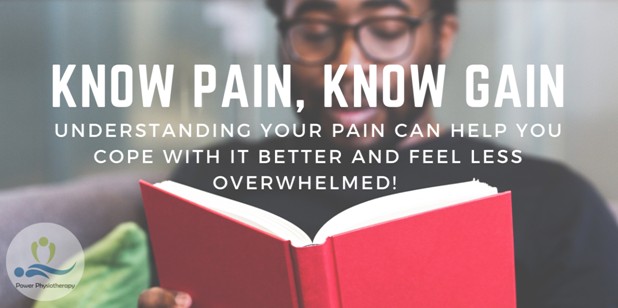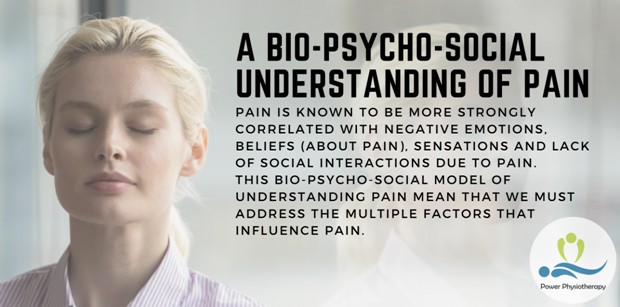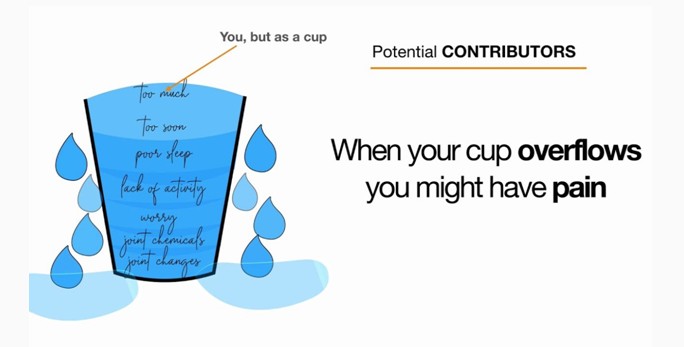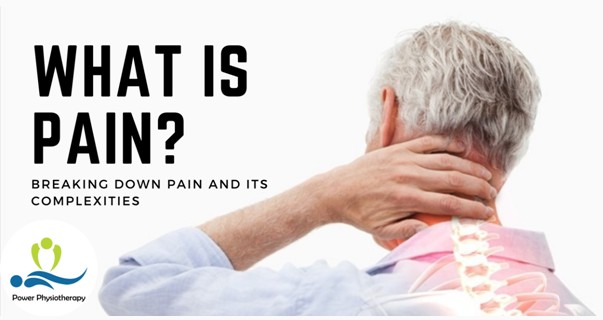Welcome to Part One of our ‘Understanding Pain’ series.
Pain is a part of life and a common experience; most, if not all of us will experience or have experienced pain at some point.
So what is it, what is the purpose of it and what should we do if we’re in pain?
Over the next few weeks we will be exploring some of these questions and delving deep into the topic of Pain. However we must acknowledge that pain is a complex and often confusing topic. If you are unsure of any of the information presented here or in future blogs, don’t hesitate to contact us to discuss your questions further!
What does that definition actually mean? Sounds like too many words right?
It means that sometimes (ACTUAL) pain IS associated with tissue damage such as when you sprain your ankle or break your leg. HOWEVER, sometimes (POTENTIAL) means that there might not be any tissue damage at all.
AND/OR and this part is very important to understand:
Very often the tissue damage or structural changes are PAINFREE and simply a normal part of the aging process. This means that just because we are aging or have changes on our x-rays or scans DOES NOT NECESSARILY MEAN THESE CHANGES CAUSE PAIN.
Let’s Summarise:
- Just because you see changes on your x-rays or scans, it does not necessarily mean these changes cause pain.
- Pain does not go hand in hand with x-ray or scan changes that show structural changes which are part of the normal aging process.
- Someone who is PAINFREE can also have structural changes on their x-rays or scans.
- Here’s the best one of all: “PAIN DOES NOT AUTOMATICALLY MEAN DAMAGE”
Rather than viewing a painful area as damaged we should instead think of that area as SENSITIVE to stimuli, such as movement, sustained positions, touch etc.

Understanding Your Pain
How would you describe pain?
DEBILITATING, FRUSTRATING, UNBEARABLE, CRIPPLING, DISTRESSING,TORMENTING, DEPRESSING.
I think we can all agree on those words, plus add on many more of our own. So what does it all mean?
It can be confusing and hard to figure out how to stop or reduce pain.
It almost seems like things just keep getting worse when pain persists for a long time.
However for the majority of musculoskeletal conditions where pain limits or stops us from doing what we want to do Doing Something Is Better Than Doing Nothing At All!
Let’s explore this idea further:
Our bodies are in a constant state of change and adaptation, different stressors cause us to adapt so we can change and grow. Just like when we do a difficult exercise; we put stress on our tissues, they adapt, we get stronger and over time we can perform the same exercise with ease.
The opposite is equally true – avoiding movement and resting rarely helps us reduce pain BECAUSE our body will adapt to NOT doing anything at all.
Let’s Summarise so far:
1. Doing nothing (resting and no exercise) feels good in the short term.
2. BUT our bodies get used to this (ADAPTATION) SO…
3. Our muscles become weaker, our joints become stiffer, we generally de-condition so our fitness reduces.
4. We’re not looking so good so far with rest and no exercise are we???
5. The weaker and stiffer we get, the more pain we get as our tissues ADAPT to this new way of being.
6. Guess what happens next?….. the cycle continues to spiral and it gets worse and worse…..
7. Here’s the big one….we start to get SCARED to move…we FEAR movement and
We AVOID movement because we THINK it will make us worse, but in fact we are making ourselves worse by not moving. Our bodies and pain respond to whatever we choose to do with our bodies.
Our bodies can adapt in a positive or negative way to pain but it all depends on whether we MOVE OR DON’T MOVE!


The above acronym, HALT, is a simple way of putting this into perspective and starting to piece it all together. These 4 examples have rather simplistic solutions for most people,
addressing these may help to decrease how much pain you feel.
Hunger – making sure your diet is nutritious and satiating can help you feel fuller and satisfied for longer
Anger – understanding the frustration and processing negative emotions regarding pain by discussing them with someone like your physio, can help you to feel less confused/angry about the situation
Loneliness – attempting to participate in your normal social activities (catching up with friends or spending time with loved ones) even when you are in some pain is ok and will reduce feelings of isolation
Tiredness – ensuring your sleep is as best and regular as possible, reducing screen time before bed and aiming to get between 7-9 hours of sleep per night

Think about all the things that might impact on your Pain.
Each factor is like a drop of water filling up your ‘Body Cup’.
When it gets too much…Pain may increase.
These are just some of the many factors that can influence pain. It’s important to understand that some things we can’t change like our age, our genetics, our structural changes.
The thing that excites us at Power Physiotherapy the most… focussing your attention on things that you can change or control.
If we can imagine all the factors that influence our pain as drops of water into a cup, if we put too many of these factors or water in the cup, then it will eventually overflow and pain may flare up or increase.
So what can we change to make a positive impact on Pain?
Either we make some changes to the factors that influence our pain removing them from ‘Our Cup’, OR make the cup bigger by increasing our capacity.
What’s the best solution? Definitely a mixture of both:
1. Figure our what you can change or modify anything that impacts on our emotional and mental well-being.
2. Move/Exercise/Get Physical
Final take home message:
If you have Pain, you don’t have to travel this journey alone.
Reach out to us.
We can help you and guide you in the most positive direction.
Let us help you get back into the life that you love.
Don’t hesitate! Call us now. We’re here to help.
9440 6125





